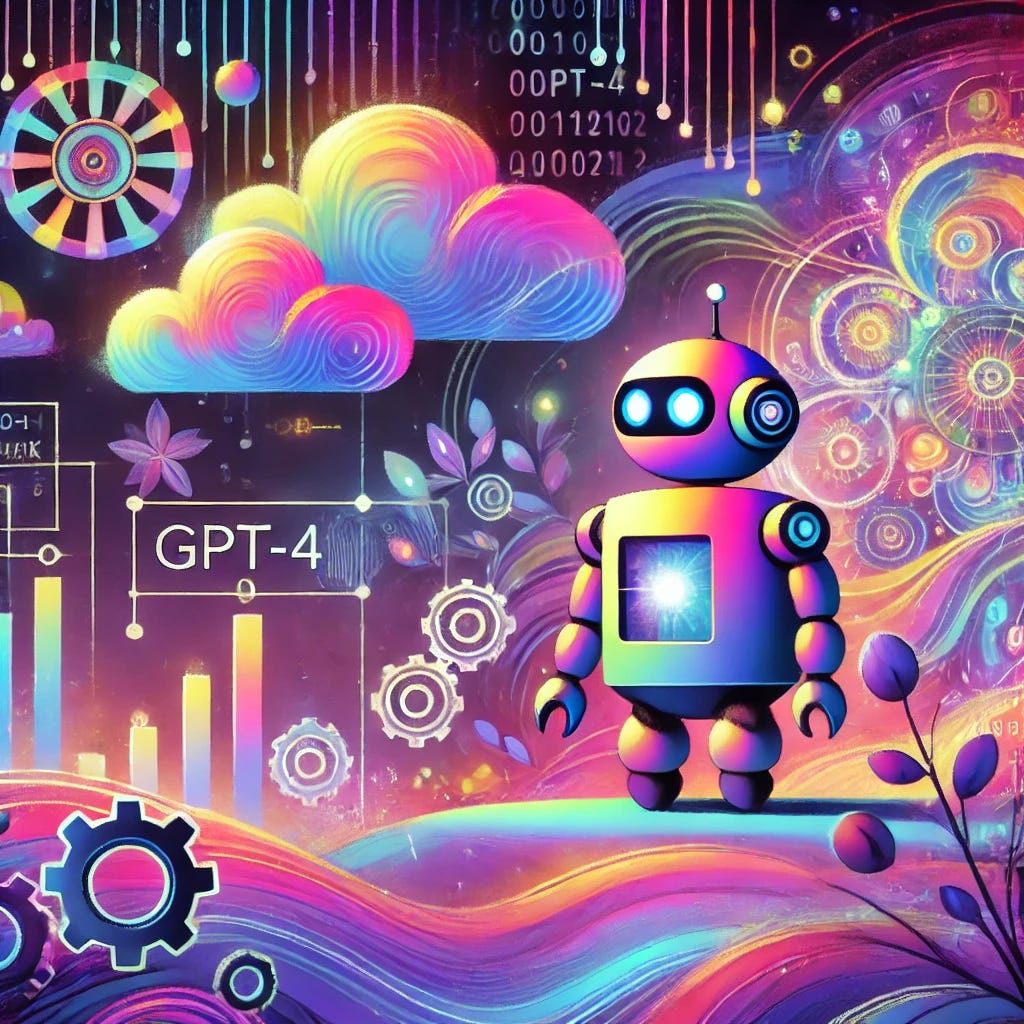The Architecture of GPT-4 and Beyond: What Lies Ahead?
In 2023, GPT-4 made waves by becoming one of the most advanced language models on the planet, not just for its raw processing power but for its ability to handle multimodal inputs. As we move into the
In 2023, GPT-4 made waves by becoming one of the most advanced language models on the planet, not just for its raw processing power but for its ability to handle multimodal inputs. As we move into the next era of AI, the question on everyone’s mind is: What lies beyond GPT-4? What new architectural features will future models bring, and how will they impact AI development across industries?
Let’s dive into the core architecture of GPT-4, what future Large Language Models (LLMs) might look like, and the profound implications for AI development.
Understanding GPT-4’s Core Architecture
At the heart of GPT-4 lies the Transformer architecture. This architecture is built around self-attention mechanisms, which allow the model to focus on different parts of the input data, dynamically weighing the relevance of different tokens as it processes language.
Multimodal Capabilities
Unlike previous versions, GPT-4 is a multimodal model. This means it can process both text and images as input, enabling richer interactions. Imagine describing an image and asking the model to generate a caption, or feeding it complex charts and having it interpret the data—GPT-4 can do that and more.
Example of Multimodal Input in Code:
from transformers import GPT4Model
# Example using GPT-4's multimodal capability
model = GPT4Model.from_pretrained('gpt4-multimodal')
image_input = 'path_to_image.jpg'
text_input = 'Explain what this image is showing.'
# Generate a multimodal response
output = model(image=image_input, text=text_input)
print(output)
The future of LLMs, however, will take this one step further, processing not just text and images but also video, sound, and 3D data
The Next Evolution: GPT-5 and Beyond
So, what’s next? Let’s take a look at key trends in the architecture of future LLMs:
1. Multimodal Intelligence on Steroids
While GPT-4 brought multimodal capabilities into the mainstream, future models will handle more complex forms of data like video streams, sensor data from IoT devices, and even 3D spatial data. Imagine a future model that can analyze video, predict outcomes, and synthesize a full report, combining audio transcripts and visual data. Models like GPT-4o are already making strides in this direction
2. Hyper-Efficient Scaling
GPT-4 has a context window of around 32,000 tokens, but future models will stretch this even further. This will allow businesses to feed massive documents, entire books, or extensive datasets into the model, and the system will maintain coherence across this large volume of information.
Example Workflow of Scaling LLMs:
User Query --> Large Context Retrieval --> Transformer Layers --> Coherent Output
As these models evolve, efficiency will improve, meaning they will require less power and resources to process more data
Beyond Transformer: Hybrid Architectures
The Transformer model has served as the foundation for GPT-4, but hybrid architectures are on the horizon. These will combine Transformers with other AI paradigms such as graph neural networks (GNNs) and Recurrent Neural Networks (RNNs), enabling models to tackle more specialized tasks like reasoning, problem-solving, and creative generation.
In the healthcare example below, imagine a model analyzing multimodal patient data:
Step 1: Feed the system MRI scans (visual), patient symptoms (text), and historical health records (structured data).
Step 2: The LLM combines these inputs, leveraging a hybrid architecture to analyze patterns in the data.
Step 3: The model generates an accurate diagnosis, reasoning through complex dependencies between the different data types.
Graph of Hybrid Architecture:
Text Input ------> Transformer Layers
Image Input -----> RNN and GNN Processing ---> Combined Output
Historical Data -> Knowledge Integration
Hybrid models will revolutionize fields like healthcare, finance, and law by improving AI’s ability to contextualize and reason with complex datasets
Unite.ai.
Ethical and Safety Considerations: What’s New?
Future LLMs will also place a greater emphasis on ethics and safety. OpenAI has already integrated content filtering and real-time monitoring into GPT-4, but upcoming models will feature more sophisticated mechanisms for detecting and preventing harmful outputs
This includes:
Dynamic content filtering to ensure that sensitive or inappropriate information is flagged.
Bias mitigation techniques to improve fairness across different demographics.
Looking Ahead: The Future of LLMs in Industry
As we explore what lies beyond GPT-4, it’s clear that the next generation of LLMs will offer transformative capabilities across industries:
Healthcare: LLMs will interpret multimodal health data, assist in diagnostics, and recommend treatments based on comprehensive data analysis.
Finance: Imagine an LLM processing vast amounts of financial data to offer real-time investment advice, while also performing regulatory checks.
Creative Industries: The next models will synthesize music, video, and text in real-time, opening new frontiers in entertainment and design.
Conclusion: What Lies Ahead?
GPT-4 has set the stage, but future LLMs will transcend what we currently know. With more efficient scaling, hybrid architectures, and an emphasis on multimodal intelligence, the next few years will usher in an era where AI is more adaptable, more responsible, and more integral to how we live and work.
By anticipating these advances, businesses can stay ahead of the curve, leveraging LLMs not just for natural language understanding but for a wide range of applications across multiple sectors.
This blog provides a clear, engaging overview of what lies beyond GPT-4, with a focus on real-world applications, ethical considerations, and code examples for the technical audience. Let me know if you'd like further additions or adjustments!




